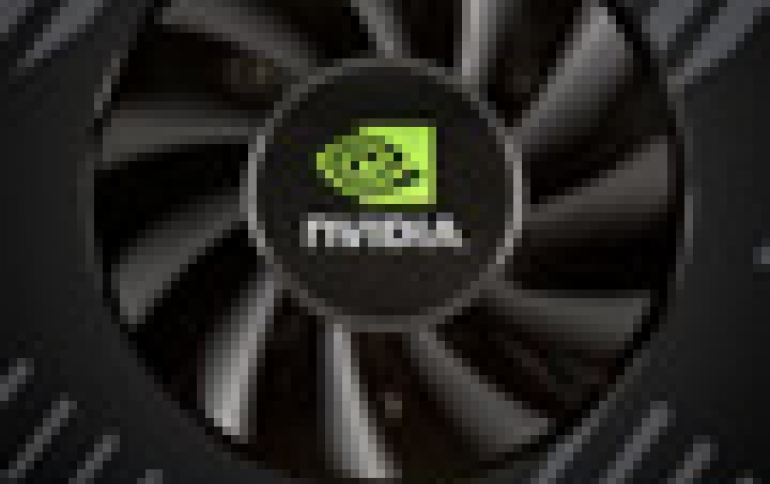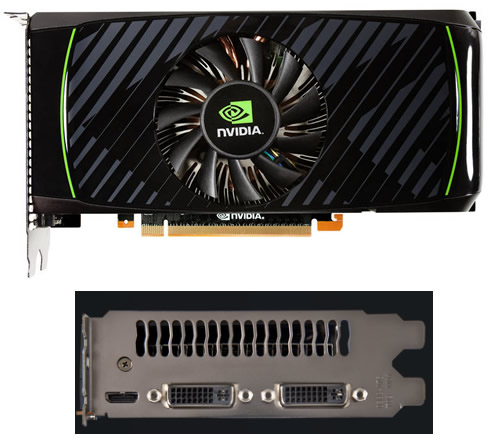
Nvidia Debuts The GeForce GTX 560 Graphics Card
NVIDIA today introduced the GeForce GTX 560 GPU, the latest addition to the company's Fermi architecture-based product family and Nvidia's response to AMD's HD Radeon HD 6870 GPU.
Starting at $199 USD, the GeForce GTX 560 joins its big brother, the previously launched GTX 560 Ti GPU, which retails for $250. With the new card, Nvidia tries match rival's AMD offering (HD 6870) in the $200 price tag. The card is also situated between the GeForce GTX 460 and GeForce GTX 560 Ti in terms of price and performance. In addition, Nvidia offering the new card as a replacement to the previous-generation GeForce 9800 GT, which is possibly the most popular-owned gaming GPU on the market.
Nvidia is allowing its add-on partners to offer overclocked versions of the GeForce GTX560 cards. So given the factory overclocks we will see, it makes the prospects of a good aftermarket overclock on the mid-grade cards a very good possibility.

The 40nm GPU has 336 CUDA cores and it is clocked at 810 MHz and can go up to 950 MHz, the card's memory is set to 4008 MHz ~ 4400 MHz (overclocking) and it will be available by Nvidia's partners with 1024MB and 2048MB GDDR5 memory configurations with 256-bit memory interface. Stream processor clocks are running at 1620MHz and up to 1900MHz under overclocking.
The cards are expected to retail with 1x miniHDMI and 2x DualLink DVI x2 outputs.
With a combined 336 NVIDIA CUDA architecture cores, up to 2048MB of GDDR5 memory, 4 billion transistors and high quality individual components all packed into the dual slot card, the Nvidia GTX 560 Graphics Cards can power today's DX11 games at resolutions of up to 1920x1080 or even higher.
PhysX and CUDA technology from NVIDIA as well as the Unreal Egine 3 - the world's most widely used game engine with DX11 capabilities including tessellation, are all supported by the Nvidia card.
NVIDIA today also released beta GeForce R275 drivers. According to Nvidia, they bring increased performance and enhanced functionality to a broad spectrum of PC games, including 3D Vision support to Duke Nukem Forever, PhysX support to Alice: Madness Returns, and Surround support to Dungeon Siege III.
Highlights of GeForce R275 Drivers:
- Performance boost across a variety of games, including Crysis 2 (6%), Bulletstorm (15%), and Portal 2 (8%)
- NVIDIA Update technology now includes SLI profiles
- Improved desktop scaling experience with new user interface and features
- Improved resizing experience for HDTVs
- More than 525 3D Vision gaming profiles, including new additions for Portal 2, Duke Nukem Forever, Age of Empires Online, Assassin's Creed Brotherhood and Dungeon Siege III, among others
- New 3D Vision Photo Viewer with Windowed Mode Support
- Support for more than 65 3D Vision Ready displays, including desktop monitors, notebooks and projectors.
The GeForce GTX 560 GPU is available starting today from Nvidia's leading add-in card partners.
Nvidia is allowing its add-on partners to offer overclocked versions of the GeForce GTX560 cards. So given the factory overclocks we will see, it makes the prospects of a good aftermarket overclock on the mid-grade cards a very good possibility.

The 40nm GPU has 336 CUDA cores and it is clocked at 810 MHz and can go up to 950 MHz, the card's memory is set to 4008 MHz ~ 4400 MHz (overclocking) and it will be available by Nvidia's partners with 1024MB and 2048MB GDDR5 memory configurations with 256-bit memory interface. Stream processor clocks are running at 1620MHz and up to 1900MHz under overclocking.
GTX 570 |
GTX 560 Ti |
GTX 560 |
GTX 460 1GB |
|
Stream Processors |
480 |
384 |
336 |
336 |
Texture Address / Filtering |
60/60 |
64/64 |
56/56 |
56/56 |
ROPs |
40 |
32 |
32 |
32 |
Core Clock |
732MHz |
822MHz |
810MHz ~ 950 MHz |
675MHz |
Shader Clock |
1464MHz |
1644MHz |
1620MHz ~1900MHz |
1350MHz |
Memory Clock |
950MHz (3800MHz data rate) GDDR5 |
1002Mhz (4008MHz data rate) GDDR5 |
1001Mhz~1100MHz (4004~4200MHz data rate) GDDR5 |
900Mhz (3.6GHz data rate) GDDR5 |
Memory Bus Width |
320-bit |
256-bit |
256-bit |
256-bit |
Frame Buffer |
1.25GB |
1GB |
1GB |
1GB |
FP64 |
1/8 FP32 |
1/12 FP32 |
1/12 FP32 |
1/12 FP32 |
Transistor Count |
3B |
1.95B |
1.95B |
1.95B |
Manufacturing Process |
TSMC 40nm |
TSMC 40nm |
TSMC 40nm |
TSMC 40nm |
Price Point |
$330 |
~$240 |
~$200 |
~$160 |
The cards are expected to retail with 1x miniHDMI and 2x DualLink DVI x2 outputs.
With a combined 336 NVIDIA CUDA architecture cores, up to 2048MB of GDDR5 memory, 4 billion transistors and high quality individual components all packed into the dual slot card, the Nvidia GTX 560 Graphics Cards can power today's DX11 games at resolutions of up to 1920x1080 or even higher.
PhysX and CUDA technology from NVIDIA as well as the Unreal Egine 3 - the world's most widely used game engine with DX11 capabilities including tessellation, are all supported by the Nvidia card.
NVIDIA today also released beta GeForce R275 drivers. According to Nvidia, they bring increased performance and enhanced functionality to a broad spectrum of PC games, including 3D Vision support to Duke Nukem Forever, PhysX support to Alice: Madness Returns, and Surround support to Dungeon Siege III.
Highlights of GeForce R275 Drivers:
- Performance boost across a variety of games, including Crysis 2 (6%), Bulletstorm (15%), and Portal 2 (8%)
- NVIDIA Update technology now includes SLI profiles
- Improved desktop scaling experience with new user interface and features
- Improved resizing experience for HDTVs
- More than 525 3D Vision gaming profiles, including new additions for Portal 2, Duke Nukem Forever, Age of Empires Online, Assassin's Creed Brotherhood and Dungeon Siege III, among others
- New 3D Vision Photo Viewer with Windowed Mode Support
- Support for more than 65 3D Vision Ready displays, including desktop monitors, notebooks and projectors.
The GeForce GTX 560 GPU is available starting today from Nvidia's leading add-in card partners.





















